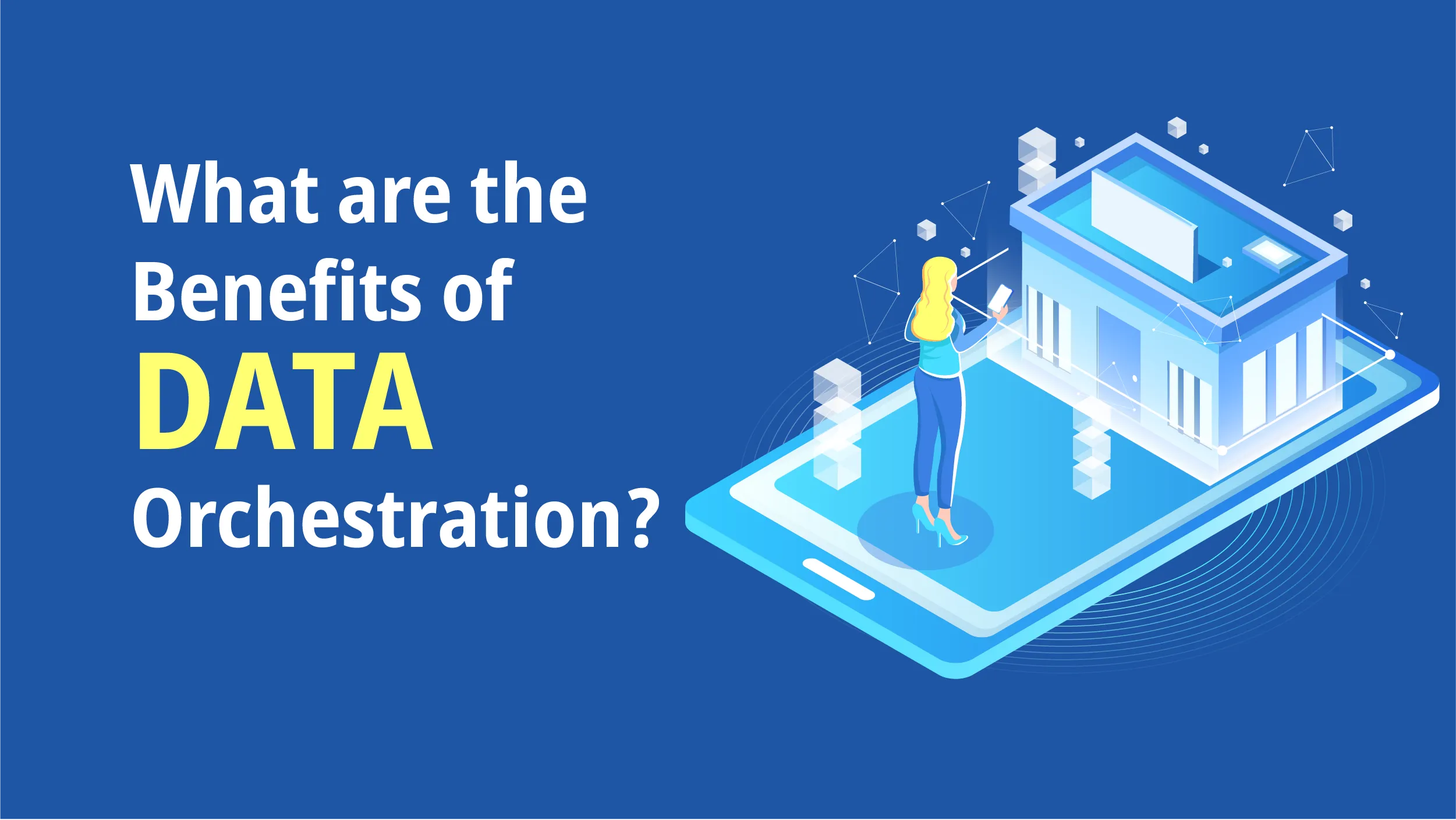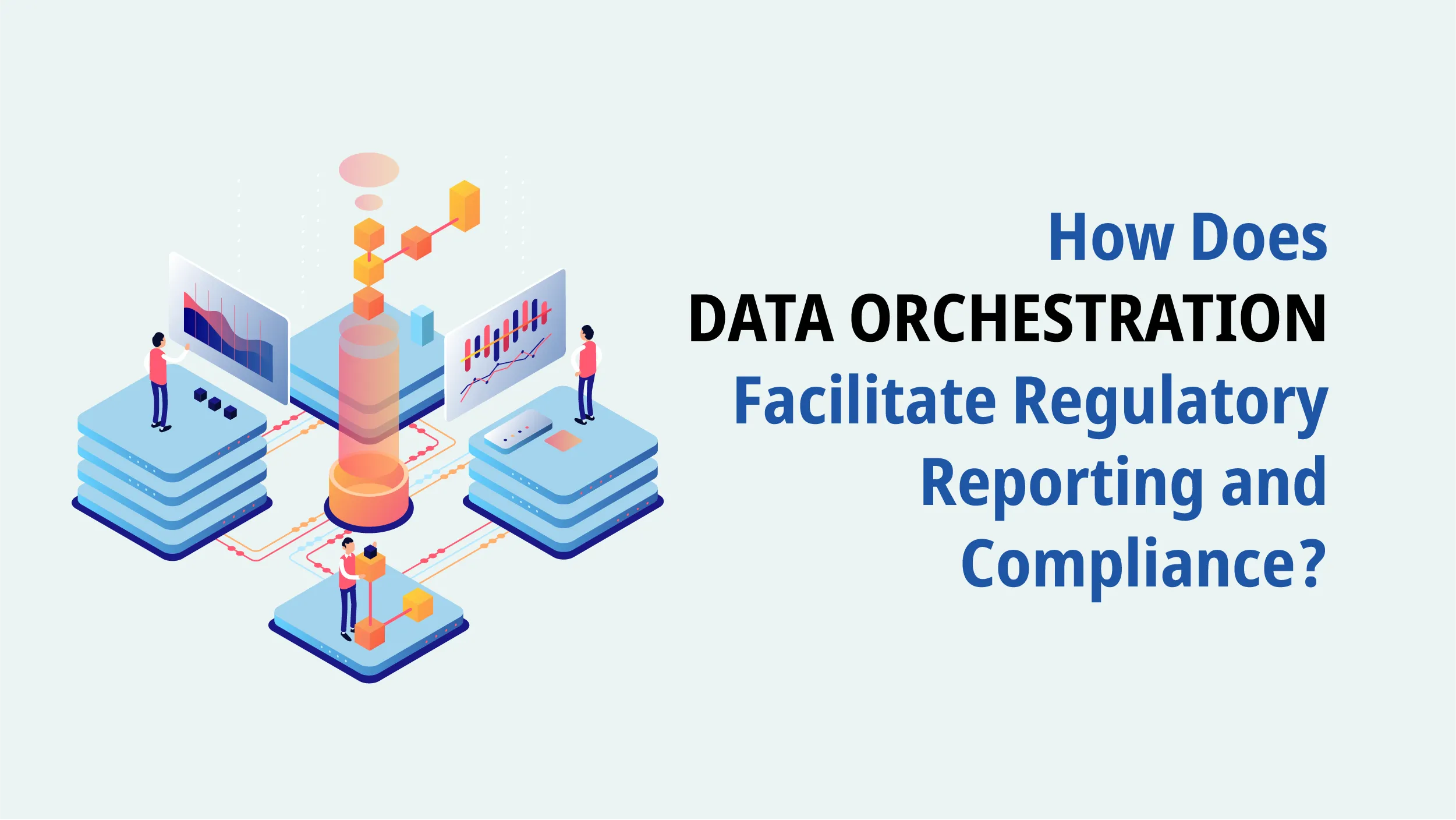Data orchestration in banking and fintech sectors is crucial to making informed decisions about account onboarding, underwriting, and fraud prevention. It helps streamline workflows, streamline regulatory compliance, and fight fraud, ensuring accurate, timely insights for informed decision-making. PYMNTS reports that between 2021 and 2022, the number of fraud incidents in banks increased by 41%. Having a linear approach to data leads to proper management and usage of it. Let’s learn more about data orchestration in banking sector.
What is Data Orchestration In Banking?
Assembling, arranging, and triggering siloed data from multiple data sources within a bank’s network is known as data orchestration in the banking industry. The process entails consolidating and merging customer data from various storage places into a standardized and accessible format, which can then be utilized for analytical, decision-making, and operational objectives.
Data orchestration is essential for expediting the banking industry’s onboarding, underwriting, fraud prevention, and continuous monitoring processes. It helps financial institutions detect fraud at origination and onboard customers more effectively. Through the automation of data flow between many tools and systems, data orchestration guarantees banks have access to comprehensive, precise, and current information.
Banks can benefit from data orchestration in several ways, including continuous real time data monitoring, spotting suspicious activity, handling massive data quantities, standardizing data, and having data instantly available for downstream systems.
What are the Benefits of Data Orchestration?

- Better Data Quality and Consistency: Data orchestration brings together data from different sources, standardizes, and integrates into one format. This improves data quality, reduces errors, and makes data more reliable for analysis and decision-making.
- Increased Operational Efficiency: By automating data workflows and data processes, data orchestration increases operational efficiency. Reduces manual effort, eliminates duplication of work, and speeds up data processing and analysis.
- Real-time Data Processing: Data orchestration enables real-time processing of data so organizations can make decisions in real-time with up-to-date information. This is particularly useful in areas such as dynamic pricing, stock trading, fraud detection, and customer behavior analysis.
- Cost Savings: Data orchestration can save costs by automating data synchronization across different systems and eliminating manual data handling. Enable organizations to scale their data usage and resource allocation.
- Better Data Visibility and Access: Data orchestration gives you a view of the entire data landscape so you can access and use data across different applications and systems. This gives better visibility, data sharing, and collaboration.
Also Read: Is Embedded Finance the Future of Fintech?
How Does Data Orchestration Facilitate Regulatory Reporting and Compliance?

Globally, compliance requirements differ significantly across regions, making the regulatory landscape challenging to navigate. Data orchestration offers enhanced workflow customization, enabling you to:
- Adhere to AML, KYC, and KYB Standards: Ensure compliance with anti-money laundering (AML), Know Your Customer (KYC), and Know Your Business (KYB) regulations.
- Ensure Precise Data Management: Collect, store, and report the necessary data accurately, creating a transparent data trail essential for audit purposes.
- Sustain and Evolve Compliance Programs: Keep your compliance programs up-to-date with shifting consumer expectations and regulatory requirements.
- Modify Workflows Responsively: Adjust workflows dynamically to meet varying risk tolerance levels, providing operational flexibility.
- Align with Legislative Updates: Proactively adapt workflows to stay in line with both current and forthcoming legislation, ensuring continuous compliance.
Achieving regulatory compliance is crucial. The risk of regulatory penalties or reputational damage can undermine your efforts to develop new products, explore new revenue streams, and secure the future of your business. Data orchestration supports a balanced approach to risk management and business growth, ensuring your operations remain compliant while scaling effectively.
How Do You Choose a Data Orchestration Tool?
When exploring solutions to enhance the quality of your data and streamline your workflows, it’s essential to consider the following questions:
- Integration Capabilities: Is the solution capable of a one-time integration that connects to multiple data sources? (If so, how many sources can it connect to?)
- Real-Time Data Workflow: Does it consolidate real-time data into a single, cohesive workflow?
- Automated Decision-Making: Will it leverage deep learning and machine learning algorithms to automate decision-making processes, thereby freeing up time and resources?
- Transparency in Decision-Making: Does it provide a clear, transparent view into the decision-making process?
- Customer Experience Optimization: Will it help create more robust customer profiles and enhance the overall customer experience?
- Fraud Detection: Will it make it easier to identify suspicious patterns and detect sophisticated activities like synthetic identity fraud?
- Continuous Testing: Can you continuously test and implement new data sources before going live?
- Adaptability: Will you be able to quickly adapt and optimize workflows in response to a fraud attack or market shift?
The ideal data orchestration platform should empower you to build real-time data workflows that provide a competitive edge. By making faster, more informed decisions, you can deliver personalized customer service and significantly improve the overall customer experience.
Top 3 Data Orchestration Tools Used in Banking Sector
Keboola
Keboola is an end-to-end ETL (Extract, Transform, Load) solution tailored for larger teams that need to unify their data and make it usable. It boasts pre-built connectors for data extraction and loading, along with a data catalog for simplified data asset management. Its flexibility is enhanced by integrations with various applications and data platforms, making it highly adaptable for managing data workflows.
Prefect
Prefect is a modern, open-source workflow management system specifically designed for data orchestration. It enables teams to define workflows as Python code, offering both flexibility and ease of use. Prefect features a user-friendly UI and dashboard for tracking workflow runs, status, and history, providing comprehensive visibility into the orchestration process. Additionally, it includes a robust monitoring and alerting system to ensure the stability and reliability of data pipelines.
Apache Airflow
Apache Airflow is an open-source dataflow orchestration tool written in Python. It employs directed acyclic graphs (DAGs) to schedule and automate data pipelines. Airflow supports a broad range of data processing systems and offers a web-based user interface for organizing and monitoring processes. It is renowned for its rich user interface, scalability, and strong community support.
Winding Up
In conclusion, data orchestration in banking is poised to play a pivotal role in shaping the industry’s future. As technology advances, banks will increasingly rely on data to drive their operations, decision-making, and customer experiences. Data orchestration will enable banks to harness the power of their vast data resources, ensuring data quality, efficiency, and real-time processing.




